Allie Volpe in Vox:
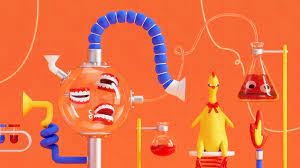 To find mirth in the world is to be human.
To find mirth in the world is to be human.
No culture is unfamiliar with humor, according to Joseph Polimeni, an associate professor of psychiatry at the University of Manitoba. For someone who analyzes humor, Polimeni tells me he’s still surprised by its complexity: How words and phrases and jokes have different meanings to everyone, but we all have the instinct to laugh. Just as humans have an innate ability to understand language, Polimeni says, so, too, do they have a reflex for comprehending everyday comedy. Sure, there are people who are better suited at making others laugh, but “almost everybody,” Polimeni tells me, can appreciate a quip.
As much as humor is universal, how it works is, to most people, a mystery. We seek out laughs in nearly every form of media, from film and TV to memes and TikToks. At the box office, popular comedies rake in big bucks. Funny people are idolized in pop culture.
More here.

 Psychically, Geuss argues, liberalism offers “the fantasy of being an entirely sovereign individual” as “a reaction to massive anxiety about real loss of agency in the world.” It offers the false security of “living in a bubble of nostalgia” for the international economic hegemony that the United States began to lose from the mid-1960s onwards, first as other economies recovered from the devastations of World War II and then with increasing globalization, job flight, Trumpism, and Brexit. In this situation, liberalism “responds in a particularly satisfactory way to deep human needs and to the vested interests of powerful economic and social groups.”
Psychically, Geuss argues, liberalism offers “the fantasy of being an entirely sovereign individual” as “a reaction to massive anxiety about real loss of agency in the world.” It offers the false security of “living in a bubble of nostalgia” for the international economic hegemony that the United States began to lose from the mid-1960s onwards, first as other economies recovered from the devastations of World War II and then with increasing globalization, job flight, Trumpism, and Brexit. In this situation, liberalism “responds in a particularly satisfactory way to deep human needs and to the vested interests of powerful economic and social groups.” Memory and perception seem like entirely distinct experiences, and neuroscientists used to be confident that the brain produced them differently, too. But in the 1990s neuroimaging studies revealed that parts of the brain that were thought to be active only during sensory perception are also active during the recall of memories.
Memory and perception seem like entirely distinct experiences, and neuroscientists used to be confident that the brain produced them differently, too. But in the 1990s neuroimaging studies revealed that parts of the brain that were thought to be active only during sensory perception are also active during the recall of memories. This is the promise of medical assistance in dying: that vulnerable people who want to die for the wrong reasons will be encouraged to live, as they always have been — while people who want to die for the right reasons will have their autonomous decision upheld. If even a single vulnerable person were pushed into assisted death, it would be a scandal to the system. That is why safeguards were put into place.
This is the promise of medical assistance in dying: that vulnerable people who want to die for the wrong reasons will be encouraged to live, as they always have been — while people who want to die for the right reasons will have their autonomous decision upheld. If even a single vulnerable person were pushed into assisted death, it would be a scandal to the system. That is why safeguards were put into place.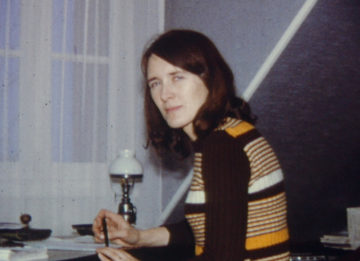 IN THE WINTER OF 1972, around the time Manhattan gallerygoers were immersing themselves in Memory—a sprawling installation comprising over a thousand tiled photographs and several hours of tape-recorded text amassed by the American poet Bernadette Mayer—the French writer of memory Annie Ernaux and her then-husband, Philippe, bought a Bell and Howell Super 8 camera. Mayer, who died this year and who in life seemed ahead of the future, once imagined “a computer or device that could record everything you think or see, even for a single day”—a thought Ernaux would echo across space and time: “Someday, would we be able to see, imprinted on a person’s brain, everything they had done, said, seen and heard?” And even so, would that suffice? Though Mayer shot a roll of film each day for one month, all the while jotting down and revising her exhaustive impressions, it was the gaps in Memory, like the ghostly zones of a photonegative, that stood out: “emotions, thoughts, sex, the relationship between poetry and light, storytelling, walking, and voyaging to name a few.” To name a few! To name everything—everything, that is, worth saving: the so-called empty hours haloing mundane life.
IN THE WINTER OF 1972, around the time Manhattan gallerygoers were immersing themselves in Memory—a sprawling installation comprising over a thousand tiled photographs and several hours of tape-recorded text amassed by the American poet Bernadette Mayer—the French writer of memory Annie Ernaux and her then-husband, Philippe, bought a Bell and Howell Super 8 camera. Mayer, who died this year and who in life seemed ahead of the future, once imagined “a computer or device that could record everything you think or see, even for a single day”—a thought Ernaux would echo across space and time: “Someday, would we be able to see, imprinted on a person’s brain, everything they had done, said, seen and heard?” And even so, would that suffice? Though Mayer shot a roll of film each day for one month, all the while jotting down and revising her exhaustive impressions, it was the gaps in Memory, like the ghostly zones of a photonegative, that stood out: “emotions, thoughts, sex, the relationship between poetry and light, storytelling, walking, and voyaging to name a few.” To name a few! To name everything—everything, that is, worth saving: the so-called empty hours haloing mundane life.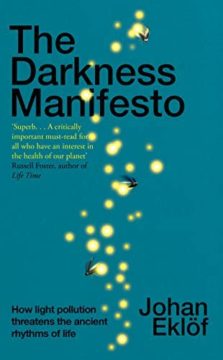 G
G In voting on Monday to issue a sweeping final report, the Jan. 6 committee has honored its duty and the Constitution. When the full report is released this week, there will be much to review and process for our country, our government and American history. But given the facts that have been revealed, these hearings had to end with criminal referrals against Donald Trump and his minions.
In voting on Monday to issue a sweeping final report, the Jan. 6 committee has honored its duty and the Constitution. When the full report is released this week, there will be much to review and process for our country, our government and American history. But given the facts that have been revealed, these hearings had to end with criminal referrals against Donald Trump and his minions.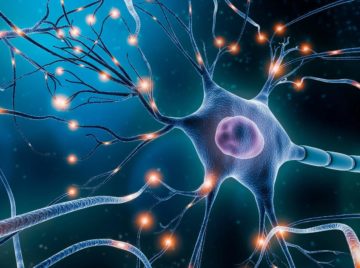 Nerve cells, or neurons, are the basic functional units of the nervous system. Multiple interconnected neurons form a neural circuit and use electrical and chemical signals to quickly transmit information throughout an organism. The nervous system is broadly divided into two sections: the central nervous system (CNS) and the peripheral nervous system (PNS). The CNS consists of the brain and spinal cord whereas the PNS includes neurons that branch off from the CNS and connect to the rest of the body. In general, neurons in the PNS receive and carry signals in the body while neurons in the CNS analyze information.
Nerve cells, or neurons, are the basic functional units of the nervous system. Multiple interconnected neurons form a neural circuit and use electrical and chemical signals to quickly transmit information throughout an organism. The nervous system is broadly divided into two sections: the central nervous system (CNS) and the peripheral nervous system (PNS). The CNS consists of the brain and spinal cord whereas the PNS includes neurons that branch off from the CNS and connect to the rest of the body. In general, neurons in the PNS receive and carry signals in the body while neurons in the CNS analyze information.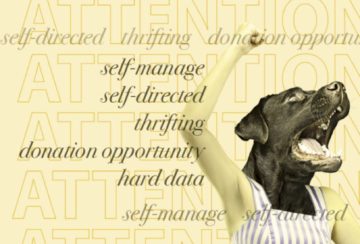 We wondered: Were we condensing phrases to terms because we were typing with our thumbs? Had we come to expect listeners and readers to autocomplete and fill in syntax? Had work jargon saturated private life because Americans worked such long hours? Had a generation told by daycare providers that they were good toy-picker-uppers grown up to make a norm of behaviorist verbing? Had the passive constructions by which one avoids assigning blame (or credit) in the workplace made naming who did what seem rude?
We wondered: Were we condensing phrases to terms because we were typing with our thumbs? Had we come to expect listeners and readers to autocomplete and fill in syntax? Had work jargon saturated private life because Americans worked such long hours? Had a generation told by daycare providers that they were good toy-picker-uppers grown up to make a norm of behaviorist verbing? Had the passive constructions by which one avoids assigning blame (or credit) in the workplace made naming who did what seem rude? Fortunately, a whole raft of new technologies is being developed that make a system-wide revolution in food production feasible. According to recent research by one of us (Chris), this transformation could meet increased global food demands by a growing human population on
Fortunately, a whole raft of new technologies is being developed that make a system-wide revolution in food production feasible. According to recent research by one of us (Chris), this transformation could meet increased global food demands by a growing human population on  So, unfortunately, it’s time for another one of these. By which I mean both a “
So, unfortunately, it’s time for another one of these. By which I mean both a “ A
A  Pick the best moment of the match. It seems impossible. The
Pick the best moment of the match. It seems impossible. The  OK, I’m going to do my best here. But I need you to know exactly what you are getting, as Joan Didion once wrote, and what you are getting is a man who cannot feel his face. My hands are still shaking. There are tears in my eyes. I’m writing this less than 10 minutes after the end of the greatest World Cup final ever, which Lionel Messi’s Argentina won on penalties over Kylian Mbappé’s France, and I do not believe it is recency bias that makes me think that this match was the single most thrilling sporting event I have ever witnessed. Every game is a story. And when you consider the stakes, the performances, the history in the balance, the refusal of either side to lose, the moments of astonishing play, the sudden reversals and wild swings of momentum, the knife’s-edge uncertainty of the outcome, and the epochal significance of a result that brought the career of the world’s best player to an almost magically perfect climax, it is hard to imagine a story more overwhelming or more satisfying than this one.
OK, I’m going to do my best here. But I need you to know exactly what you are getting, as Joan Didion once wrote, and what you are getting is a man who cannot feel his face. My hands are still shaking. There are tears in my eyes. I’m writing this less than 10 minutes after the end of the greatest World Cup final ever, which Lionel Messi’s Argentina won on penalties over Kylian Mbappé’s France, and I do not believe it is recency bias that makes me think that this match was the single most thrilling sporting event I have ever witnessed. Every game is a story. And when you consider the stakes, the performances, the history in the balance, the refusal of either side to lose, the moments of astonishing play, the sudden reversals and wild swings of momentum, the knife’s-edge uncertainty of the outcome, and the epochal significance of a result that brought the career of the world’s best player to an almost magically perfect climax, it is hard to imagine a story more overwhelming or more satisfying than this one. Rochelle “Shelley” Buffenstein has one of the world’s largest, if not the largest, lab-dwelling colonies of the naked mole rat. (No one has done a worldwide tabulation, but she has 4,500 of them.) Buffenstein has spent decades studying the little subterranean-dwelling rodents. Over the years, she and her colleagues have uncovered one surprising discovery after another, which has led them to re-orient the whole field of anti-aging research.
Rochelle “Shelley” Buffenstein has one of the world’s largest, if not the largest, lab-dwelling colonies of the naked mole rat. (No one has done a worldwide tabulation, but she has 4,500 of them.) Buffenstein has spent decades studying the little subterranean-dwelling rodents. Over the years, she and her colleagues have uncovered one surprising discovery after another, which has led them to re-orient the whole field of anti-aging research.